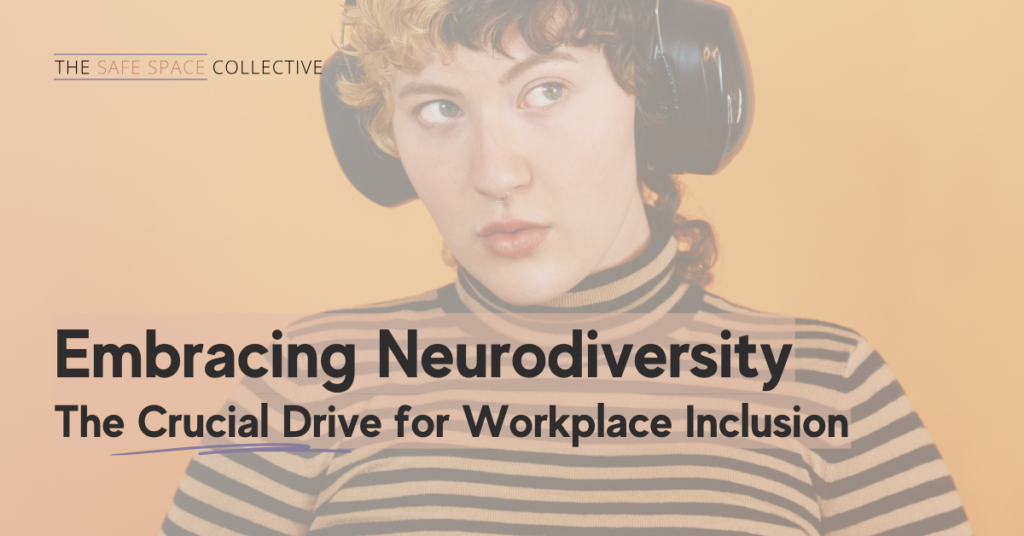Our brains are beautiful, and the more we learn about them, the more we begin to understand just how unique they are. We know that there is diversity in how our brains process information, and, importantly, how there’s no right or wrong way to do so.
Still asking, ‘What is neurodiversity?’ Australia, let us shine some light. With input from Neurodivergent Advocate April Lea, we’ve created some simple Q&As to give you a better understanding. You’ll walk away empowered with knowledge about neurodiversity, how all brains are different, and how to embrace these differences in the workplace.
What is neurodiversity?
Here, we answer some of the most common questions about the neurodiverse brain and the broader definition of neurodiversity.
What is the definition of neurodiversity?
“Neurodiversity is simply the acknowledgement that there are diverse ways for the brain to exist,” April says. In official terms, it refers to how diverse we all are, including people with neurological and developmental differences, like autism, ADHD and dyslexia. Essentially, neurodiversity means there’s no right or wrong way to think, learn and function.
What is a neurodiverse person?
We refer to a person as neurodivergent, not neurodiverse. A neurodivergent person is anyone whose brain works differently. “This could be anyone who doesn’t fit in the category of what was once decided was the norm,” adds April. “But what it really means is that we recognise there is more than one way that the human brain can exist.”
What is the neurodiverse brain?
As a non-medical term, we might use say ‘neurodivergent (not neurodiverse) brain’ when discussing people within the framework of neurodiversity. It simply refers to someone whose brain differs from what we would call a ‘neurotypical brain’.
What is a neurodiverse condition?
Neurodiversity is a concept that acknowledges there are different ways we humans process information, function and behave. Neurodivergent relates to someone whose brain works differently. So, someone with a neurodivergent condition could include Autistic people, ADHDers and others who have a neurodevelopmental condition.

A deeper dive into neurodiversity
We know that knowledge is power. And when it comes to embracing neurodiversity in the workplace, the more we know, the better equipped we are to do it. These commonly asked questions go deeper into understanding the differences between the ‘neuro’ labels and what they mean.
What is the neurodiversity movement?
The neurodiversity movement encompasses all neurological experiences, including ADHD, autism, dyslexia and epilepsy. It urges people to view neurodiversity as a gift rather than a condition that needs to be fixed, solved or eliminated.
What is the neurodiversity paradigm?
The neurodiversity paradigm proposes that neurodivergent and neurotypical brains should be able to exist together and free from judgment. Most importantly, it states that neurotypical brains are not superior to neurodivergent brains. It’s just an acknowledgement that they are different.
What is the difference between neurodiverse and neurotypical?
We use the terms ‘neurodivergent’ and ‘neurotypical’. The terms ‘divergent’ and ‘typical’ refer to how someone’s brain processes, functions and behaves. According to April, neurodivergent traits are human traits; they’re just a little different to the average neurotypical brain. “It’s more about how much a trait impacts an individual in their day-to-day life than the fact that they do or don’t have that trait,” April says. “For example, a neurotypical person could have attention to detail, but it might not govern their life or impact them like it can a neurodivergent person.”
What is the difference between neurodiverse and neurodivergent?
An individual can be neurodivergent. This simply means someone whose brain functions differently from a neurotypical person. Neurodiverse and neurodiversity just mean that there are a range of ways the human brain works.

What about neurodiversity in the workplace?
As the place where most neurodivergent people need more support, it’s natural to have lots of questions about neurodiversity in the workplace. Whether you have Autistic employees or ADHDers in the workplace or you simply want to ensure you create an inclusive and supportive work environment for all, these Q&As are for you.
What percentage of the population is neurodivergent?
An estimated 15 to 20% of the world’s population is neurodivergent, signalling that a large portion of your workforce could be as well. Considering these figures, it is likely you have an ADHDer or Autistic person in the workplace who needs your support.
What is neurodiversity in the workplace?
Neurodiversity in the workplace recognises that everyone’s brains are different, so what they need to do their best at work can also differ. Embracing it can mean small but significant changes, like making accommodations for autistic people and ADHDers, educating the team on neurodiversity, looking for signs that someone might need support, or offering assistance to ensure everyone feels included.
How can workplaces embrace and accommodate neurodiversity?
Education matters, so ensure the entire team understands neurodiversity and how it can impact the workplace. Depending on the individual,accommodations for ADHDers or Autistic people can be beneficial for ensuring they work comfortably and efficiently. These accommodations might include flexible start times, delivering more explicit instructions and making adjustments for sensory sensitivities.
Why should workplaces embrace neurodiversity?
A workplace that ensures all its employees feel supported, safe and able to work to the best of their abilities will get the best work from them. Neurodiversity recognises just how diverse each of our minds can be. Valuing these differences and promoting inclusivity brings several benefits, including innovation, creativity and overall wellbeing. The Safe Space Collective can help you find out more.
Continue your learning with The Safe Space Collective
We’ve only begun to scratch the surface of embracing neurodiversity and how this framework impacts the workplace. As the always-on link between your neurodivergent employees and your organisation, The Safe Space Collective is here to keep you informed and help you make changes that matter. Check out our free, seven-day trial to discover what’s possible.



